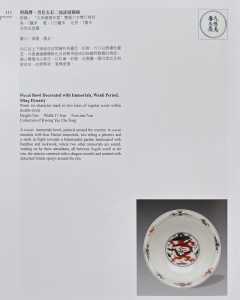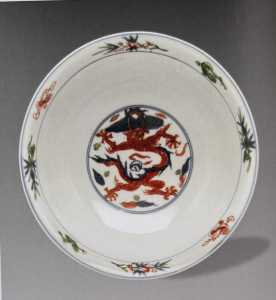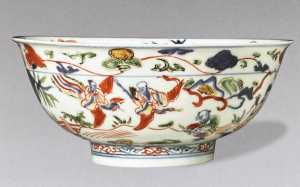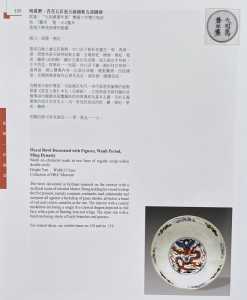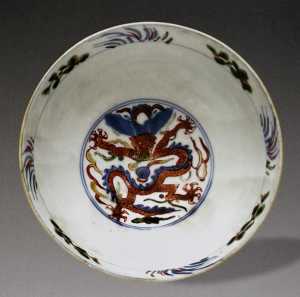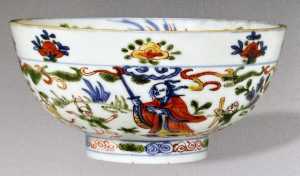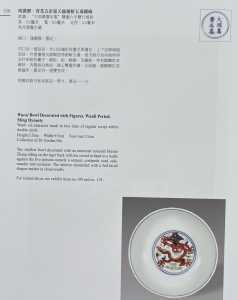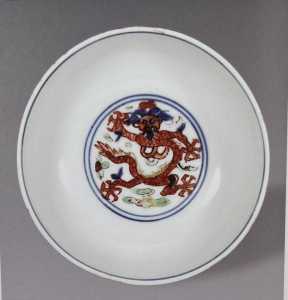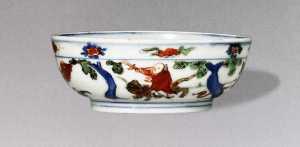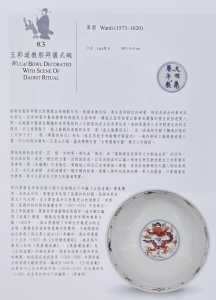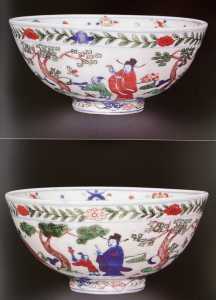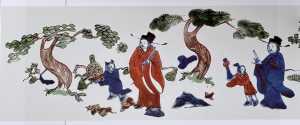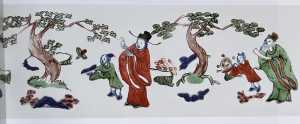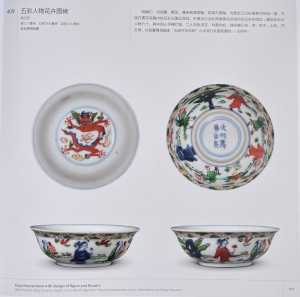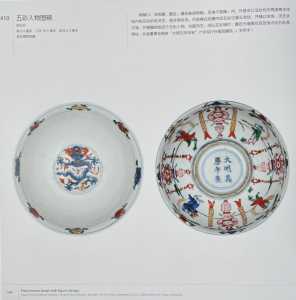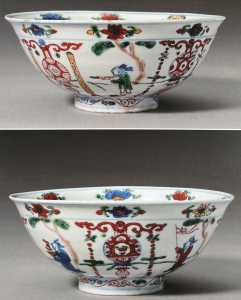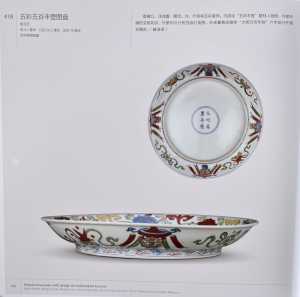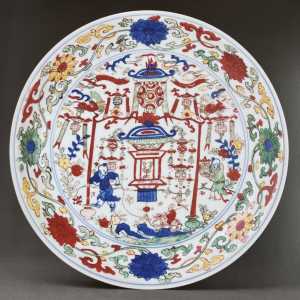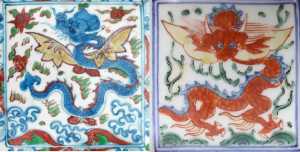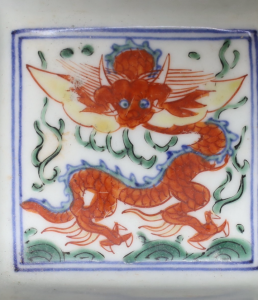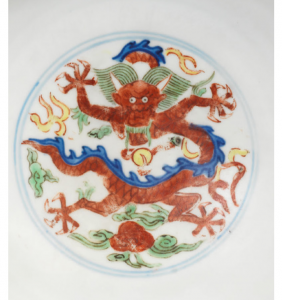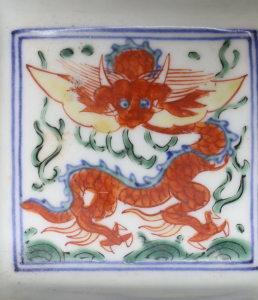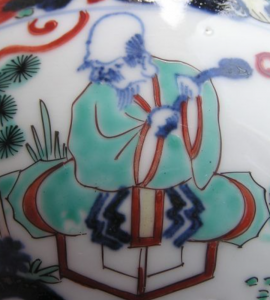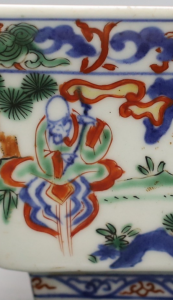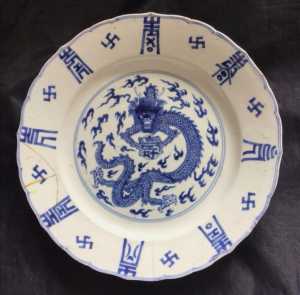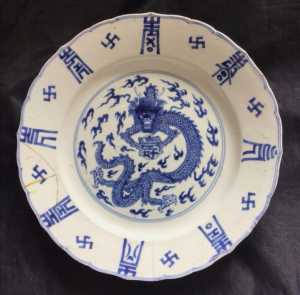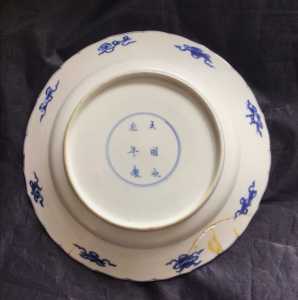The Chinese and Asian Art Forum. For Fans, Collectors and Dealers.
 Basic Rules For the BidAmount Asian Art Forum: Talk about whatever you want. You can even discuss and offer things that are for sale if they are authentic. Maximum image file size per post is 2 MB. Images of 700pxl x 700pxl are optimal if saved at a medium resolution. Be respectful of others and enjoy yourself. Click the YouTube link for a brief tutorial on using the forum. You can also EMBED Videos by cutting and pasting from You-Tube, Vimeo etc.
Basic Rules For the BidAmount Asian Art Forum: Talk about whatever you want. You can even discuss and offer things that are for sale if they are authentic. Maximum image file size per post is 2 MB. Images of 700pxl x 700pxl are optimal if saved at a medium resolution. Be respectful of others and enjoy yourself. Click the YouTube link for a brief tutorial on using the forum. You can also EMBED Videos by cutting and pasting from You-Tube, Vimeo etc.
NOTE: To post an item or add a new post, click open the category title from the FORUM LIST, and CLICK the Blue ADD TOPIC button.
Here's an interesting vase. Not wanli but c18, however imperial, so one would assume 5 claws. But this has a 3 clawed winged dragon. And a five clawed normal dragon on the lid...
https://www.bonhams.com/auctions/24027/lot/21/
Also, for what it's worth, the Wikipedia page on winged Chinese dragons shows an image of a dragon with 3 claws...
https://en.m.wikipedia.org/wiki/Yinglong
I'll have to do some more.research...
Hi Thomas -
Images/descriptions for comparison from:-
1-9:- Three bowls, exhibited in ‘The Fame of Flame’, an exhibition of Imperial Wares of the Jiajing and Wanli periods, held at the University Museum and Art Gallery, University of Hong Kong, 14 October 2009 till 28 February 2010 …
10-13:- Bowl, exhibited in ‘Enlightening Elegance’, Imperial Porcelain of the mid/late Ming’, Huaihaitang Coll, private Hong Kong collection …
14-18:- Two bowls and a dish, Gugong, The Palace Museum, Beijing …
Due to the massive orders from the Imperial household, Wanli period wares can vary considerably in quality and painting styles, as can the mark writing. However, they always exhibited an overall ‘uniformity’ in drawing, enamel tones and ‘feel’ when held …
I will let you make your own comparisons, but note the difference in the drawing execution of the central dragon or the pine tree needles on your piece and those posted, to name just two …
Then compare the enamel tones, especially the red and, to a lesser extent, the yellow …
Brian @lotusblack and Tim @greeno107 are quite correct regarding 3 clawed dragons. Personally, I have only seen 4/5 claws on Imperial Wanli wucai wares and Tim is also right regarding the spacing of the mark and the closeness of the enclosing double line boarder to the edge of the interior footrim …
Very good copies of Wanli wucai were produced in the Kangxi period, although the painting style is very different. I have no knowledge of the late 19/early 20th century Japanese copies, so defer to Tim …
From the images it does seem to have some age but, personally, I think it is a later copy and not of the period …
Stuart
@thomasumjohnson That Bonham's example went unsold... I wonder why (not sarcastic).
If the Bonham's piece is genuine, it looks to me to be very different than your bowl. Let's compare...
The red is a different color. The blue is a different color. The yellow is a different color. The manner of facial rendering is different. The scrolling is not only different in color, but green and red look to be flamese, while the black lines with green enamel look like scrolling vines (but I think they're related to the water).
I see Stuart has taken a look at this post... let's see what he finds.
@greeno107 thanks again, I was more interested in the wings on the dragon... It seems most wanli winged dragons have no claws, also that a traditional Chinese winged dragons has 3 claws. I'm not 100% on this, I need to do some more research. I just thought it was strange that an imperial ware has a 3 clawed "winged" dragon, described as "withering" and the lid has an imperial 5 clawed dragon with no wings. Here's the link again...
https://www.bonhams.com/auctions/24027/lot/21/
I'm assuming the dragon in question also has wings (and 3 claws as in the above link)
Also the Wikipedia page for Chinese winged dragons, has 3 claws. I'm trying to find out about winged dragons, it seems they may have 3 claws but I'm not 100% as I need to do more research..
https://en.m.wikipedia.org/wiki/Yinglong
When I look at the piece I see some elements that remind me of Kangxi Yongzheng.
Here's a wanli winged dragon that appears to have 3 claws, not sure on the reliability of the source
Another wanli 3 clawed dragon .
@thomasumjohnson I remember the first one - that was sold at Leonard Joel in Australia:
@jg1133 ah cool, thanks, maybe winged dragons usually have 3 claws?
Here's another wanli dragon with 3 claws.. no wings thou...
https://www.bonhams.com/auctions/11909/lot/159/
Your Bowl may possibly be Japanese early to mid 19th c.
I have one with a central winged Dragon and immortals to the exterior.
Wucai in style but the red reminds me of your Bowl.
I may have posted it,if not I’ll look for images.
It has a 4 character auspicious mark if I recall.
Vic
@thomasumjohnson I think the examples you’ve cited are very interesting… solid evidence of the use of 3 claws on dragons on Wanli period wares - but not marked & period.
Anyway, the other elements also require some attention. Right?
I had posted a link in another thread on Japanese copies of Chinese marks - the Wanli mark is mentioned.
In Japanese, the mark translates to Dai Min manreki nensei, and is found on Edo and Meiji porcelains.
Here’s an example… not a very well done dragon design, but a fairly good Wanli copy overall.
Here are some very convincing 'wucai' style round boxes from the Britich Museum.... Japanese c. 1900. Not a dragon design, but look how well the porcelain mimics Ming wucai wares.
https://www.britishmuseum.org/collection/object/A_1930-0717-7
@greeno107 thanks Tim, I see where you're coming from.. what's striking about the link is that it's the same scene, with the same characters (the people, the scene) which is a cause for concern. Unless it's a known scene from the wanli period). The difference is it looks newer, the green colour is off, more kangxi, compared to the bowl in question and it's not as convincing in its general composition. The enamels aren't as convincing in colour or contrast. But yes you have a point.. I disagree about the red thou, that others have pointed out. The comparison early posted with the Christie's example.
Is this a know motif, or is it more specific to my bowl and the one you posted?
Is this a know motif, or is it more specific to my bowl and the one you posted?
All of the motiffs on genuine pieces are 'known' by Chinese and Japanese artists during the 17th c. until about the mid 19th c., and consequently copied very closely. After that, motiffs often do go through some changes, but are still copied. Why?
The answer is simple - the making of ceramics was a lifelong trade, and one did not dedicate their life to the pursuit with only mediocre ability.
We (modern day collectors) often struggle with this overly simple explination because we struggle with a our own modern paradigm - that art is trade created by both amatuer and expert.
This simply was not true prior to the mid 19th c.
The making and decorating of ceramics was a life long pursuit... people did not just walk off a farm to become an artist, or pick it up as a hobby. So, apprentices would be required to tediously study every aspect of their art - especially designs, and especially Chinese wares.
The process of copying pushed students towards mastery, and when successful, led some to become masters of their trade. As a result, some Japanese copies are extremely convincing, and more challenging, even of the same period, but subtle differences in the materials and styles give us clues that they are of different origins.
That is why so many collectors are quick to point out difference in color, form, foot rim, mark, paste quality, etc... you get the point.
Since I personally deal very little with Ming wares, I defer to Stuart @ming1449 and others to clarify if they can point to specific known Wanli pieces with the same design as your bowl.
However, I trust my eyes, and I believe it is best to follow a process of evaluation that begins with the critical question, 'what is wrong about this piece?"
One detail that can not be resolved is sufficient to prove an item is not of the period.
Every detail has to be correct to prove an item is of the period.
Unfortunately for all of us, the burden of proof required for authenticity is not fairly balanced with what little is required to disprove.
In the case of your beautiful bowl, there are just too many aspects that do not line up with known Wanli wucai wares.
Here's a challenge for you - Find me a genuine Wanli wucai piece with that squiggly green cloud/fire design with black lines, or the square mark that almost touches the foot rim. If you do, I'll print this thread and eat it - jokes aside, see what you can find.
Good luck!
Tim
I agree with @shine.
The mark is done very oddly and with two squares.
Also of interest are the two horns on the dragon.
Front facing dragons are very popular atm. Hence the market place is flooded with copies.
My personal feeling is that it's either a Japanese example from the late 19th century or its a chinese modern copy.
I dont like the way the dragon is depicted. Very stiffly painted. And those claws!
I only have one that I purchased from @shine awhile ago. It's a Kangxi period. One day I hope to get it restored.
Mark
Thanks for visiting "The BidAmount Asian Art Forum | Chinese Art"
If you sell on eBay, or have a shop feel free to post images and descriptions and links.
Check back often for discussion about the latest news in the Chinese art and antique world. Also find out about the latest Asian art auctions at Sotheby's, Christie's, Bonhams and Tajans.
Auction results for: fine porcelain, ceramics, bronze, jade, textiles and scholar's objects. As well as Japanese, Thai, Vietnamese and other Asian cultures.
Thank you,
Peter Combs
Topics and categories on The BidAmount Asian Art Forum | Chinese Art
Kangxi vases, Kangxi dishes and chargers, Kangxi ritual pieces, Kangxi scholar's objects, Qianlong famille rose, Qianlong enamels, Qianlong period paintings, Qianlong Emporer's court, Fine porcelain of the Yongzheng period. Chinese imperial art, Ming porcelain including Jiajing, Wanli, Xuande, Chenghua as well as Ming jades and bronzes.
The BidAmount Asian Art Forum | Chinese Art
A free Asian art discussion board and Asian art message board for dealers and collectors of art and antiques from China, Japan, Korea, Thailand, Cambodia, Vietnam and the rest of Asia. Linked to all of the BidAmount Asian art reference areas, with videos from plcombs Asian Art and Bidamount on YouTube. Sign up also for the weekly BidAmount newsletter and catalogs of active eBay listing of Chinese porcelain, bronze, jades, robes, and paintings.
The art of calligraphy - and for the ancient Chinese it certainly was an art - aimed to demonstrate superior control and skill using brush and ink. Calligraphy established itself as one of the major Chinese art forms during the Han dynasty (206 BCE - 220 CE), and for two millennia after, all educated men were expected to be proficient at it.
The Museum’s collections of Asian art span nearly five millennia and encompass the cultures of China, the Himalayas, India, Japan, Korea, and Southeast Asia. In 2007, the Museum launched an initiative to create dedicated galleries for the collection, beginning with a gallery for the arts of Korea ...
Chinese art is full of symbolism, in that artists typically seek to depict some aspect of a totality of which they are intuitively aware.
China Online Museum is the finest online museum of Chinese art. It features Chinese calligraphy, painting, ceramics, bronzes, carving, and other artworks.
Chinese Ceramics & Works of Art. Overview Upcoming auctions Contacts Auction results ... Christie’s sales of Chinese ceramics and works of art showcase centuries of Chinese history. Held throughout the year in London, New York, Paris and Hong Kong, they attract a wide audience of collectors and connoisseurs vying for pieces as diverse as ...
Explore Asian Art Week. Contact the Specialist Department. Chinese Paintings ... Senior Specialist, Head of Sale. [email protected]. Tel:+1 212 641 5760. Bid in-person or online for the upcoming auction:Fine Chinese Paintings on 10 September 2019 at New York. Bid in-person or online for the upcoming auction:Fine Chinese Paintings on 10 ...
Discover an abundance of must-see art from all corners of a vast continent at Christie’s NY Asian Art Week. From contemporary classical and Chinese paintings to works with exemplary provenance from the Art Institute of Chicago, our Rockefeller Paza galleries will be full of ancient treasures and contemporary masterworks in a salute to the vibrant arts of Asia.
Sold to benefit The Art Institute of Chicago’s Asian Art Acquisition Fund, the sale features 84 lots with a focus on Ming and Qing porcelains, and offers a rare insight into the taste for collecting Chinese ceramics and works of art in the Midwest from the end of the 19th century through the 1980s. Highlights include two Wanli wucai garlic-head vases, a Qianlong mark and period, blue and ...
Specialist, Chinese Paintings, Christie's London Dr Malcolm McNeill is a Specialist in Chinese Paintings at Christie’s, based in London. He previously worked as an assistant curator of the Chinese collections and the Victoria and Albert Museum in London, as a researcher at the British Museum, and as a translator and tour guide at the National Palace Museum in Taipei.
The Christie's Education 2020 Conference: The Chinese Art Market 18 Jun 2019 Christie’s Education is delighted to announce our first international academic conference in Asia which will take place in Hong Kong from 26-27 November 2020 at the Hong Kong Convention and Exhibition Centre and will run in parallel with Christie’s Hong Kong Autumn Auctions.
The summer Chinese Art sale in Hong Kong will feature works of art from several private collections, including Qing porcelains and textile from the collection of the legendary Chinese art dealer A. W. Bahr (1877–1959), fine gilt bronze Buddhist sculptures from an old Hong Kong collection, an East Asian collection of Qing dynasty wine cups and jades, and a Japanese collection of Song ceramics ...
Sotheby's Chinese Works of Art Department holds two auctions each year in London, New York, Hong Kong and Paris.
Chinese Art - View Auction details, bid, buy and collect the various artworks at Sothebys Art Auction House.
With more than 340 Chinese works of art dating from the Neolithic to the Republic periods, highlights of this sale include a selection of Qing Imperial monochromes from the collection of Arnold and Blema Steinberg, early ceramics from the Art Institute of Chicago and Chinese porcelain and works of art from the collection of Henry Arnhold.
Results: Sotheby's Asia Week achieved $52.4 million in six strong auctions, exceeding pre-sale estimates. With 76.5% of lots sold and 60.3% of lots surpassing high estimates, the Asian art sales at Sotheby's indicate continued collector interest in the finest works of art from China, India and and the Himalayas.
Today's sale of Important Chinese Art will proceed as planned with sessions at 10 AM and 2 PM EDT. Sotheby's will be monitoring the weather conditions throughout the day and will be available to coordinate alternative bidding options should conditions make it difficult for clients to attend the auction in person.
Bonhams Chinese Art department is renowned for offering the finest works of art representing the richness and breadth of China's artistic heritage, particularly Imperial porcelain, white and spinach green jades, cloisonné and Buddhist art. Specialised international auctions are held globally, including London, Hong Kong and San Francisco.
Bonhams : Chinese Works of Art We use cookies to remember choices you make on functionality and personal features to enhance your experience to our site. By continuing to use our site you consent to the use of cookies. Please refer to our privacy and cookie policies for more information.
Bonhams Fine Art Auctioneers & Valuers: auctioneers of art, pictures, collectables and motor cars. We use cookies to remember choices you make on functionality and personal features to enhance your experience to our site. By continuing to use our site you consent to the use of cookies. ... Chinese Art (US) General enquiries
Bonhams : Fine Chinese Art We use cookies to remember choices you make on functionality and personal features to enhance your experience to our site. By continuing to use our site you consent to the use of cookies. Please refer to our privacy and cookie policies for more information.
Bonhams Fine Art Auctioneers & Valuers: auctioneers of art, pictures, collectables and motor cars Bonhams : Asian Art We use cookies to remember choices you make on functionality and personal features to enhance your experience to our site.
Bonhams are international auctioneers of fine Chinese and Japanese art. We specialise in rare Imperial and Export Chinese ceramics and works of art, as well as Japanese ceramics, fine and decorative works of art from the Neolithic Period to the 20th century. View on map
Bonhams Fine Art Auctioneers & Valuers: auctioneers of art, pictures, collectables and motor cars. We use cookies to remember choices you make on functionality and personal features to enhance your experience to our site. By continuing to use our site you consent to the use of cookies. ... Asian Art Bonhams. Work. 22 Queen St.
